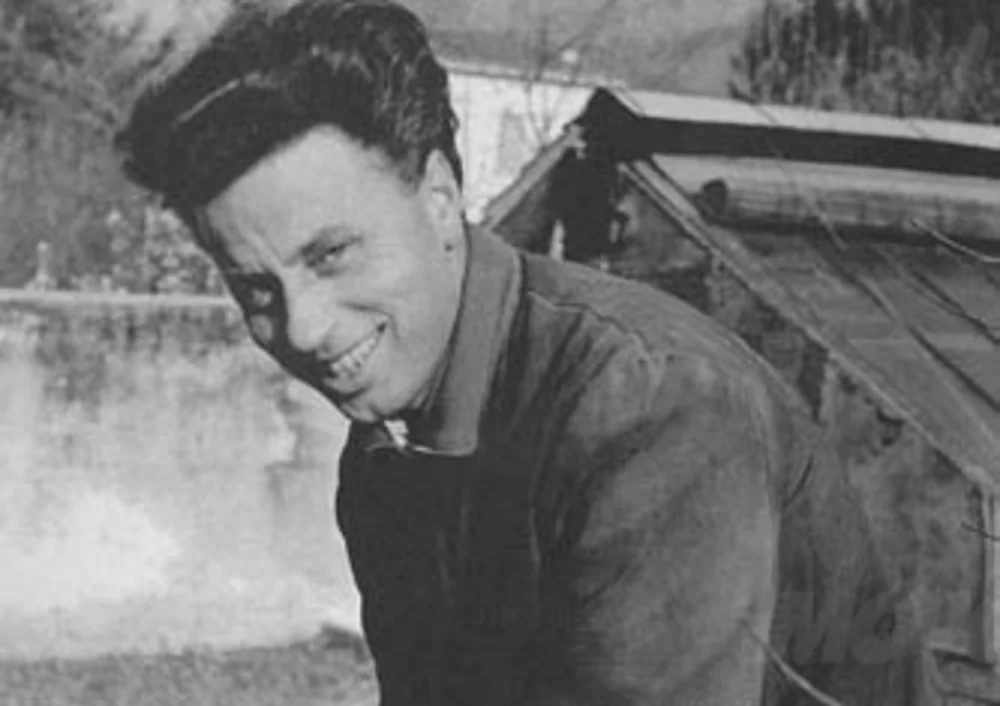Giulio Cesare Carcano and Moto Guzzi
One of the innovators who made Italy great in motorcycling. A pioneer of sailboat design, lover of cats and freedom.
He was born in Milan in 1910. After his secondary school studies, he graduated from the Politecnico in 1934 and at the end of his military service was taken on by Moto Guzzi.
His design philosophy has four cardinal points: simplicity, lightness, reduction of passive resistance and engines with good torque. But above all, the original swing arm suspension mounted all the bikes up to eight cylinders.
In 1950 he pushed the management to build a wind tunnel at Moto Guzzi, the first motorcycle manufacturer in the world to get one. In keeping with his multifaceted genius, he used the wind tunnel to design the two-person bob sled for the Aeronautica which won the Olympics in Cortina.
Around 1957 he designed the Moto Guzzi 8-cylinder 500 cc, a motorcycle which was way ahead of its time, and still a unique technical achievement to this day. It provided a stunning 75 hp.
Throughout his career Carcano designed historic motorbikes such as the Falcone and the V7 and established Guzzi as a world leader in motorcycle racing.
In 1966, after the death of Carlo Guzzi, Carcano left the company to which he had dedicated thirty years of energy and enthusiasm, devoting himself to his second great love, sailing.
He opened a regatta boat design studio, but as Carcano himself said, What I wanted to do above all was design boats I myself liked and I found it hard to bend to the requirements of contractors.
It was Carcano who created the Villanella, winner of the Two Ton Cup, as well as the Vihuela, Venssa, Viola, Vinca, and Volpina. His boats were distinguished from the rest by the characteristic V-shaped prow, the letter V being a sort of personal obsession reflected in the names of the boats and his celebrated V engines for Moto Guzzi.
He was also an excellent sailor, and from helmsman he won a third place in the international 5.5 tonnage in 1961 in Helsinki with the Volpina and his Cisko-Yu dominated all the regattas on Lake Como for many a year.
Carcano participated with Beppe Croce in the first contacts for an Italian America’s Cup challenge through a meeting with US President John F. Kennedy, Carcano was also on the Italian Sailing Federation Comitato d’Onore FIV with Agostino Straulino and Nico Rode.
Carcano was a man ahead of his times, and what’s more he knew it. He designed everything with obsessive attention to detail, optimising weights, studies shapes and appendices, experimented with materials, came up with the design for the outboard rudder and was a pioneer of light displacement. He designed boats which performed outrageously well, especially downwind. Some of his lines can be clearly seen today in the Open Ocean yachts of contemporary designers.
From the 1980s on, he lived a quiet life in Mandello in his house on the lakeshore. When he was invited to recall those glory years he would initially display a certain reluctance, but then the memory of the people he had worked with would fire him up and he would soon be reliving his past achievements.
Motorboat racing was another great love of Carcano’s.
He also managed to leave his mark on rowing. In the coxless four, the classic formation has the oars alternating; Carcano’s new idea was to have the first and fourth on one side and the two central oars on the other side; this innovation won the rowing club Canottieri Moto Guzzi many titles.
Since then, almost all crews around the world adopt this technique.
Augusto Farneti, Professor, journalist and motorcycling expert said of him:
Giulio Cesare Carcano had a scientific interest in the races. We would find him in the box, at the edge of the race track, […] A sure point of reference for the drivers with whom he often became friends, a confidant, he knew how to surround himself with competent collaborators and devotees who would follow him right to the end in a sporting story that was without equals. The sportsmen idolised him. This unrepeatable situation, almost like some sort of planetary alignment, was a major contributing factor to Moto Guzzi’s record number of victories.
Ildo Renzetti, a designer and engineer at Moto Guzzi, recalls:
I met Carcano in 1950. I had been taken on by Moto Guzzi, my first job. He was 40 years old, but he looked much younger: tall, thick hair, open-necked sports shirt, suede bomber jacket, the air of a gentleman about him. He was just a little bit intimidating. I summoned up the nerve to ask him for some explanations about the work I was doing. Not only did he answer me with all due detail, but he also started asking me questions. It was no easy thing to make friends with Carcano, but in my case, we hit it off immediately. In his circle of friends there was no room for anyone who was arrogant, presumptuous or full of themselves.
He loved cats, engines and sailboats. The cats ruled the roost. When I went to visit him there were always two magnificent cats sitting on two cushions, listening in on our conversation, with an expression of great interest in what we had to say.
To be honest, Carcano had a lot of the cat about him: intelligence, quick reflexes and a great love of freedom. In his work too he had to have absolute freedom. He detested being told what to do.
As a designer, he had an exceptional genius, but the project had to be one that fired his enthusiasm, otherwise it would come to nothing. I had the enormous good fortune to have him as a teacher, but especially the privilege to have him as a friend.
Carcano died at almost ninety-five years of age in his house in Mandello.

Read all curiosities